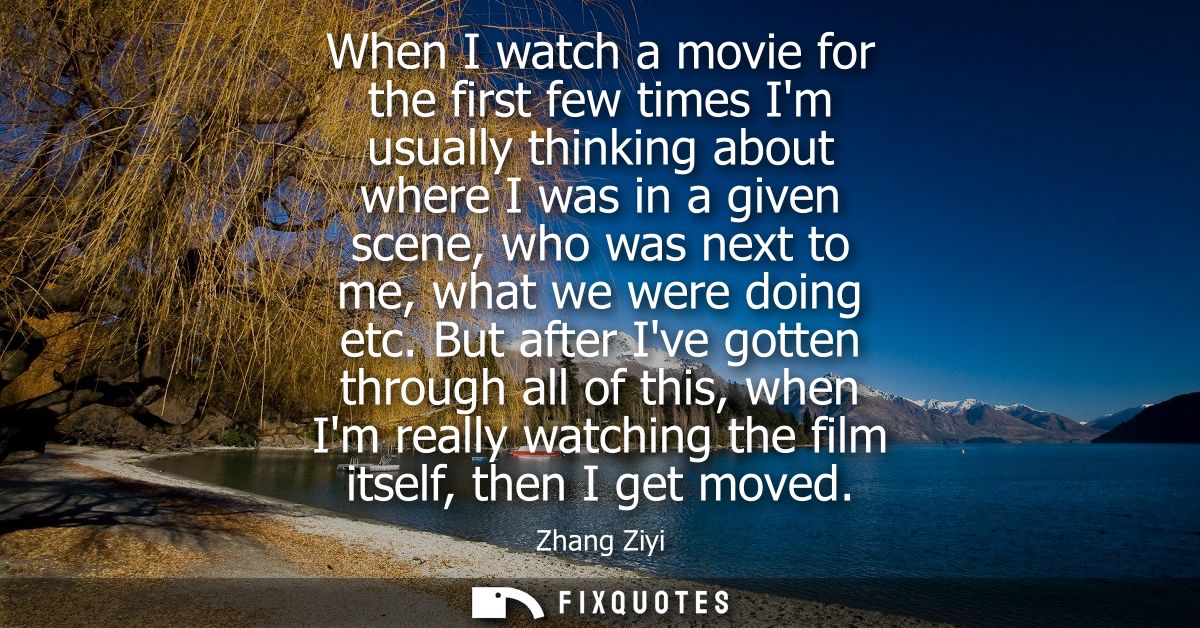"When I watch a movie for the first few times I'm usually thinking about where I was in a given scene, who was next to me, what we were doing etc. But after I've gotten through all of this, when I'm really watching the film itself, then I get moved"
About this Quote
Zhang Ziyi’s reflection reveals the layered experience of being both a performer and an audience member, especially in the context of rewatching a film she has acted in. Initially, her engagement with the movie is filtered through her memories of its creation. Rather than immersing directly in the narrative, she is transported back to the realities of the film’s production: the physical space, her co-actors, perhaps the technical challenges or emotional atmosphere present during filming. This focus on the logistics and companionship behind the scenes underscores how personal and professional experiences can leave lasting imprints, making it difficult to approach one’s own work objectively at first.
As Zhang watches the film multiple times, however, something shifts. The immediate associations with her lived experiences begin to recede. She moves past the memories of the set, the presence of fellow actors, and the behind-the-scenes moments, allowing herself to engage with the completed work as a viewer rather than as its creator. It’s at this stage, with the separation from the process of making the film, that the story, performances, and emotional currents of the movie can affect her genuinely.
This transition speaks to a broader human truth about distance and perspective, especially when it comes to evaluating or appreciating anything to which we are closely tied, creative or otherwise. Emotional distance, achieved over time or through repeated exposure, can enable a deeper, more authentic connection with art. For Zhang, only after moving beyond her personal attachment to the making of the film is she able to experience it in its fullness and be genuinely moved by its artistic power. Her comment offers insight into the complex relationship artists have with their own work, marked at first by recollection and self-awareness, but eventually yielding to appreciation and emotional impact as an audience member.
About the Author

